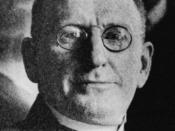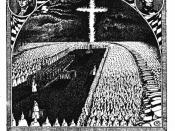It is well known that mass media can frame a sociopolitical case in specific ways, that can have considerable effect on the publicÃÂs ideas and perceptions related to the issue. Framing is one of the most significant concepts in the study of public opinion. Evidence from experiments, surveys, and political campaigns states that public opinion mostly relies on that frames elites choose to use. For instance, citizensÃÂ opinions about a Ku Klux Klan rally may rely on whether elites frame it as a free speech issue or a public safety problem. As one eminent public opinion scholar states it: the ÃÂessence of public opinion formation in general lies in the distillation or sorting out of frames of referenceÃÂ (Chong 1993).
Framing is a psychological characteristic and a cognitive process which allows us to receive and organize information in patterns, that resemble cognitive maps. New information is adapted and interpreted when using these frames.
Mostly, conflicting parties develop different frames about what is on hand, and what should be done and by who. Trailing these frames can be a begining point in the analyses of conflicts and for creating conflict maps. These maps can be pointed as tools which promote helpful ways to deal with conflicts. Really, most integrative conflict-resolution methods, that target at joint problem solving and mutual benefits, include one stage or more during that there is a intentional interference in the current frames, and considering processes of reframing. Framing and reframing, that are part of most intervention training programs, are established and useful intervention methods for breaking an impasse (Moore 1986).
Gray (1997) claims several basical environmental conflicts frames, stated through content analysis of communication exchanges: loss-gain, characterization, process, outcome, and aspiration frames. Kaufman and Smith (1999) adopted this basic list in their study, and developed the following...


